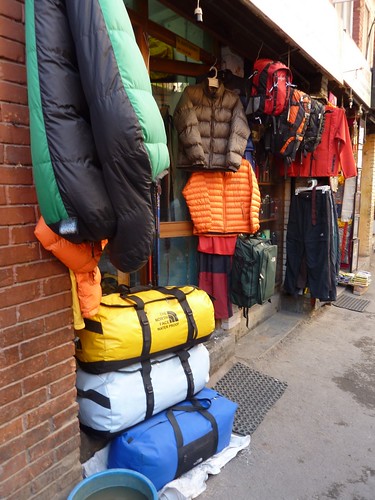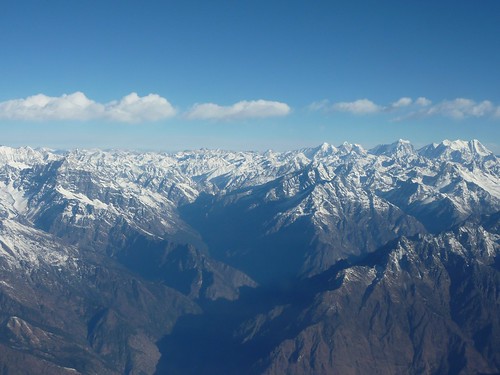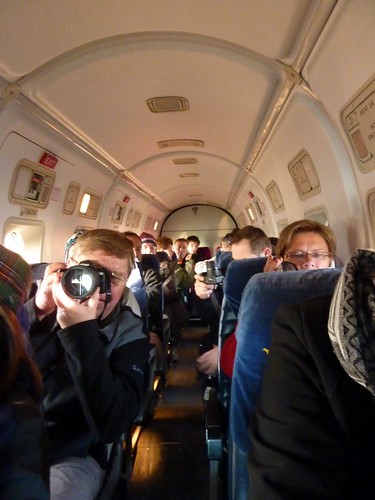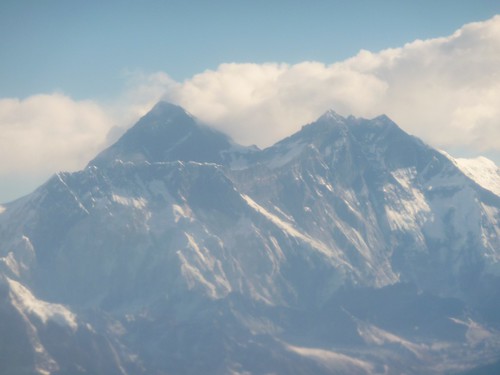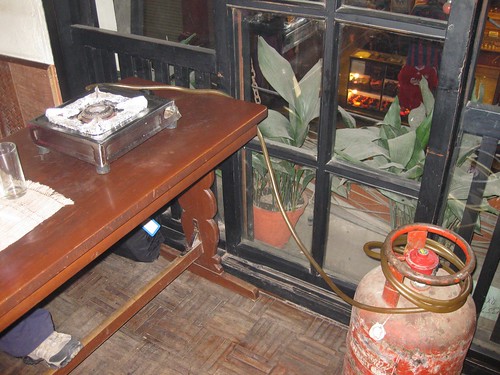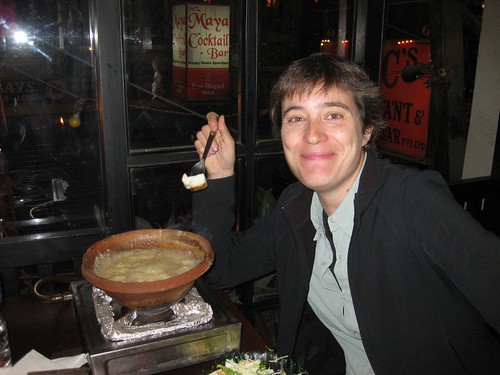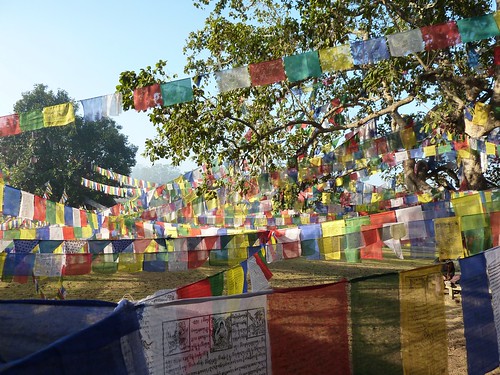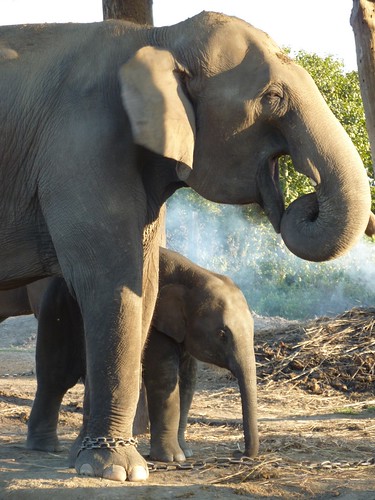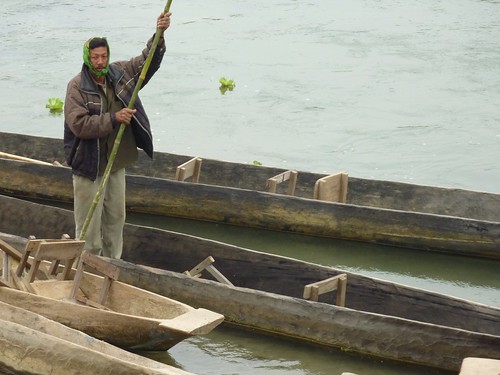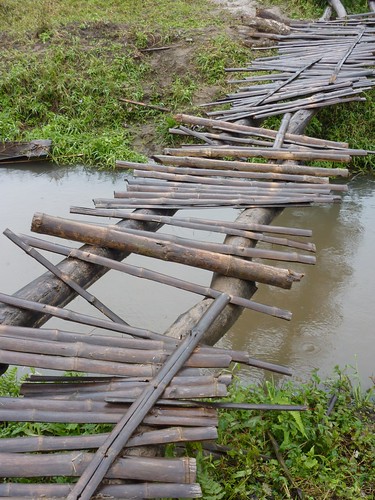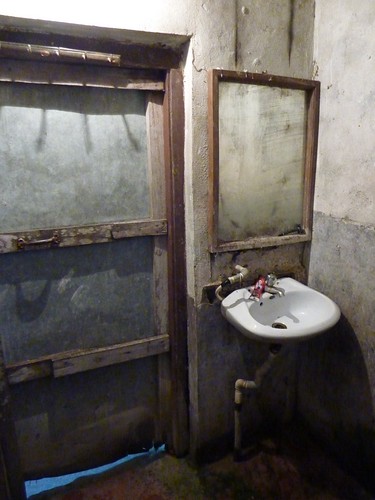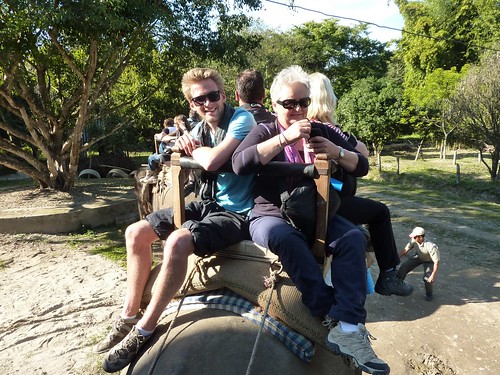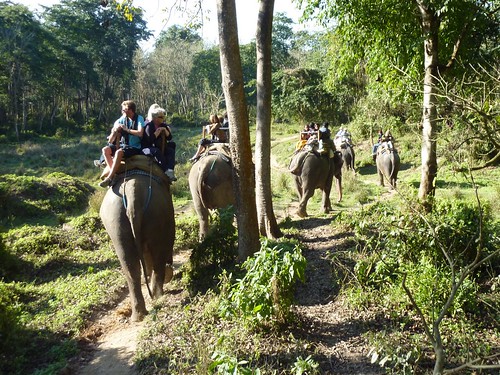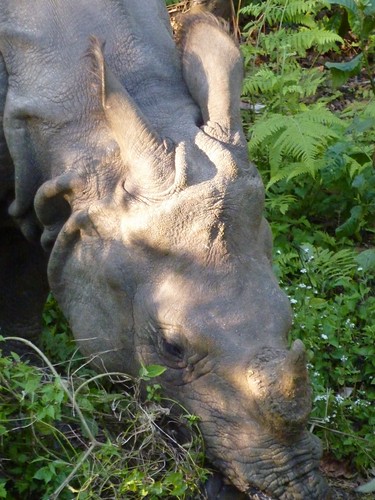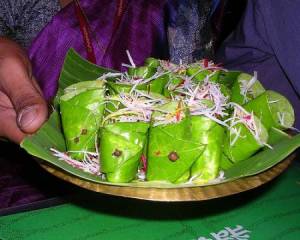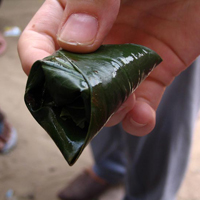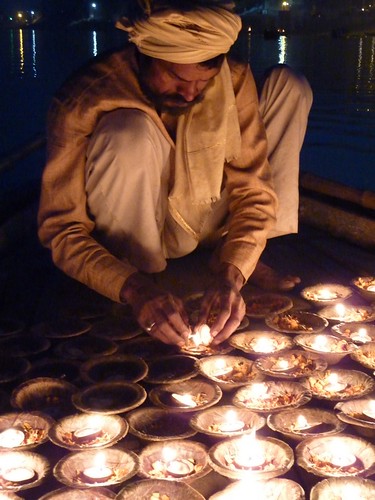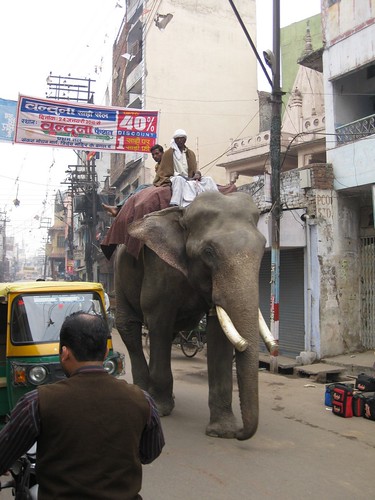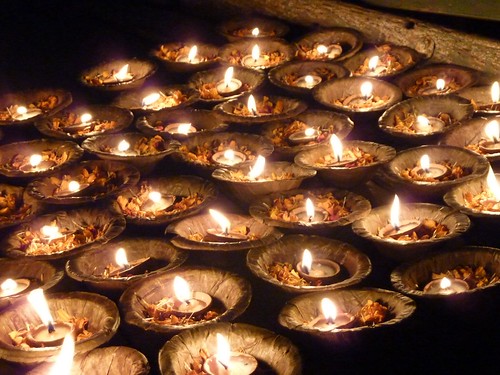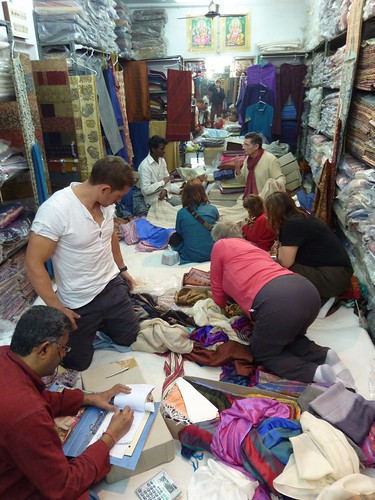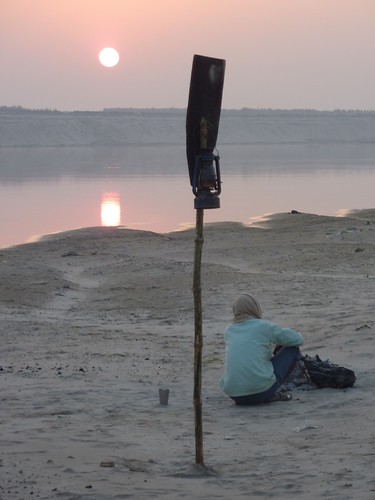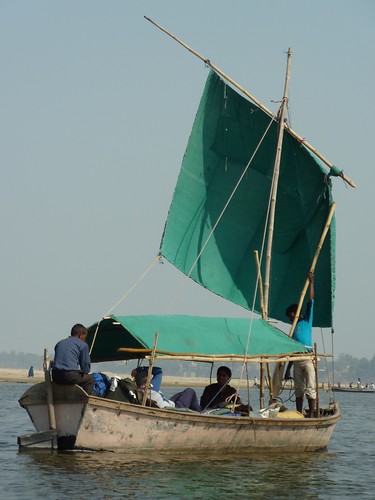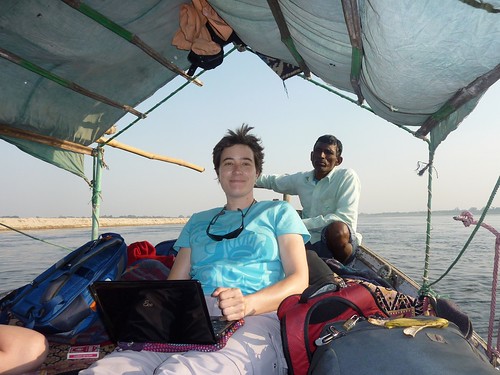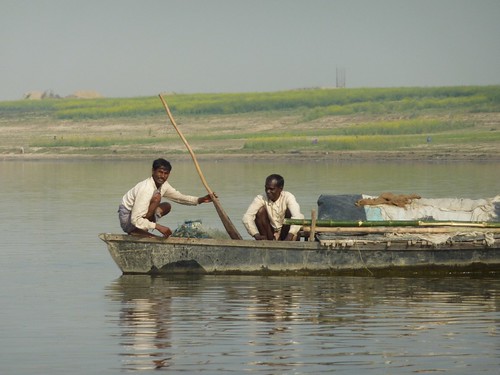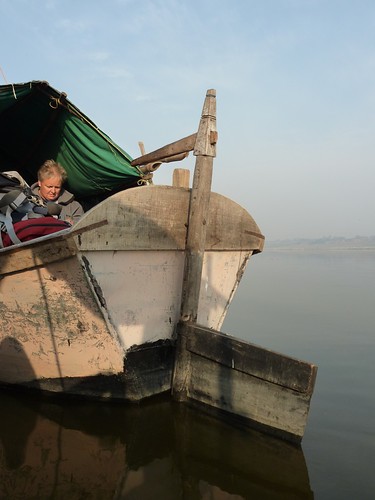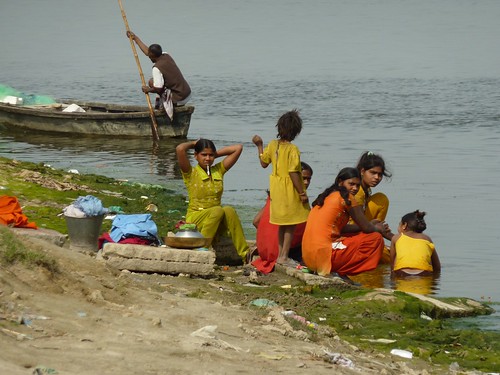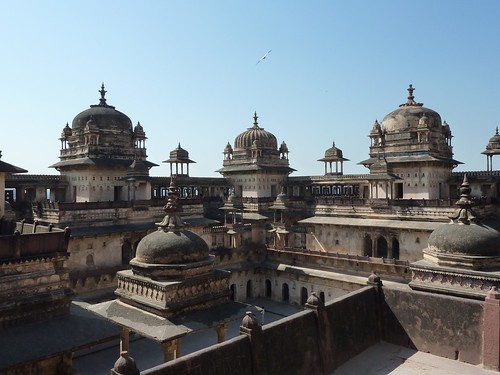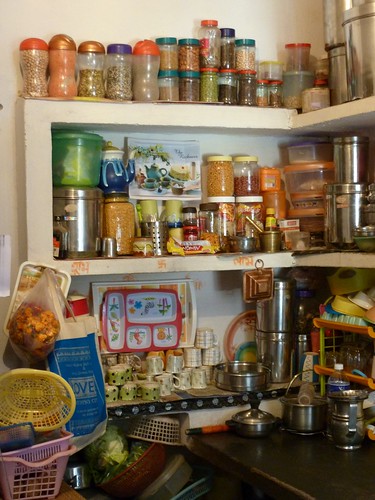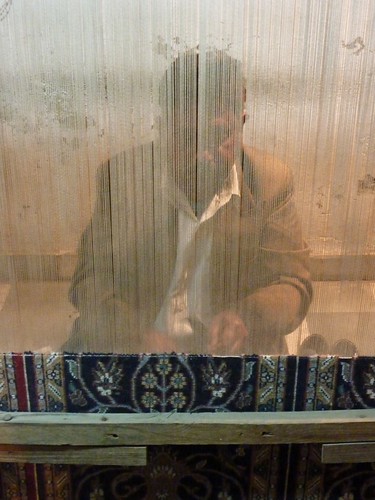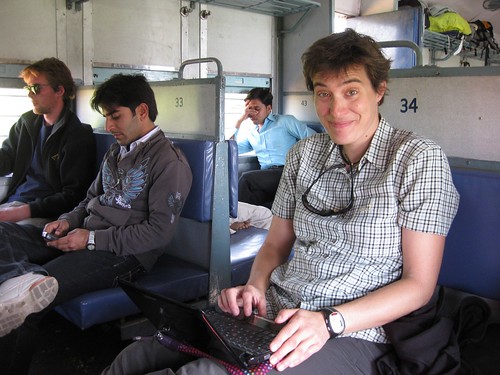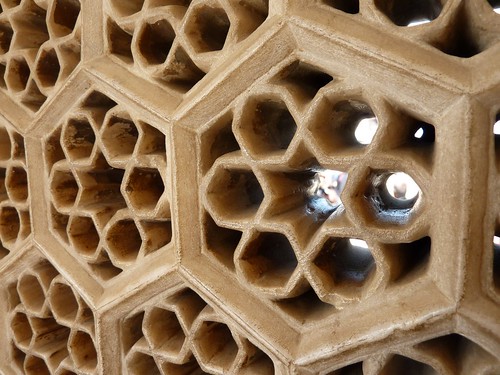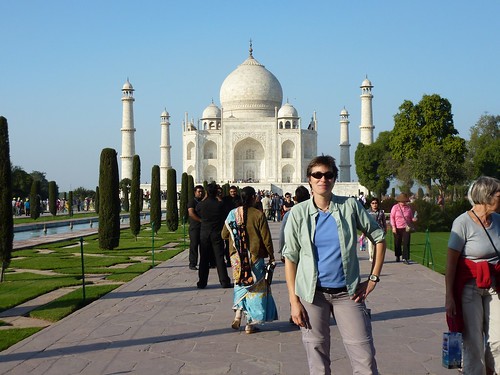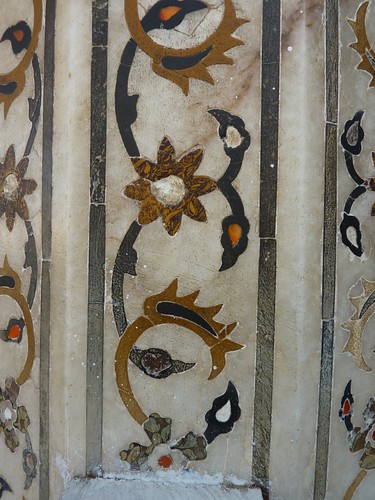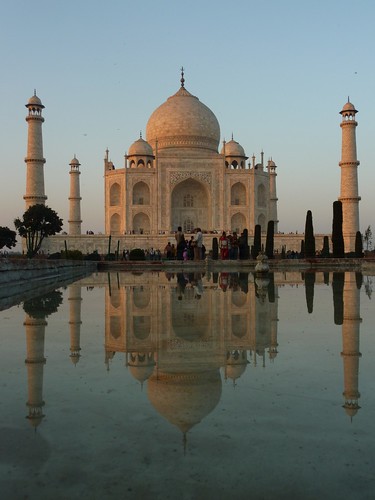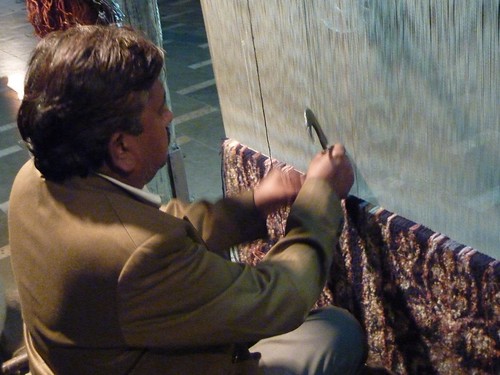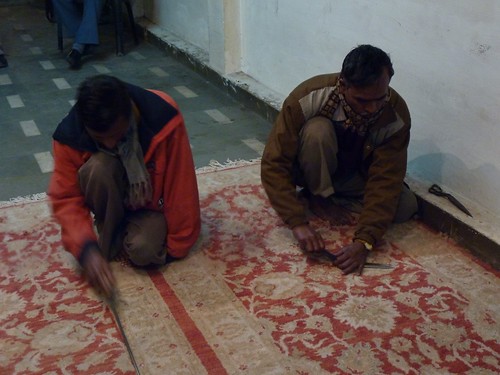K-K-K-K-K-K-Kathmandu!
That’s really, really where I’m goin’ to!
If I ever get out of here,
I’m goin’ to Kathmandu!
Am I the only one who remembers that song? Whenever I think about Kathmandu that song pops into my head, and since I was just in Kathmandu, it’s in my head a lot these days. The other song that’s in my head all the time is one from “Veer”, the Bollywood movie we saw in Varanasi. It’s incredibly popular in the region right now, and we heard it all over. We declared it the song of the trip, and played it back to back to back whenever we could. Patti even bought the sound track.
So – Kathmandu. It’s a weird mix. We stayed in an area called Thamel, which is backpacker central. Every other shop in the crowded streets is selling knock-off trekking gear – clothing, boots, sleeping bags, trekking poles, hats, mitts, blah blah blah. The real manufacturers of this stuff must tear their hair out because I’m pretty sure there’s very little actual genuine product in Thamel, despite the fact that everything has got the proper labels. I bought two “North Face” shirts for a total of 1,400 Nepalese rupees, which is about $21.00. I also mounted a serious search for new pants, and tried on about fifty different pairs in five or six shops, but only had luck when I went to a real brand name shop, and even then I have some issues with inseam length (the story of my life…).
The shops in Thamel that aren’t selling trekking gear are selling trekking tours, or knock-off CDs and DVDs (where do you think Patti got her sound track?), or carpets and tourist tat. There are even quite a few nice bookstores, which was a treat. And there are lots of bars and restaurants, many of which have loud live bands every night, so you can have the odd experience of wandering through the streets of Kathmandu, past shops selling exquisite Thanka paintings of Buddhist mandalas, while listening to a cover version of “Every Little Thing She Does is Magic” and contemplating the purchase of a –30 degree-rated sleeping bag by “Nurth Face”.
 A typical Thamel Street
A typical Thamel Street One of the optional activities offered by Intrepid in Kathamndu was a short flight along the Himalayas to see Everest. Patti was keen to go, and after consulting those who had done it before it sounded like something that was not to be missed, so I signed up too. The costs was considerable - $165 USD - but I figured that was well in the ballpark of the hot air ballooning in Turkey or the helicopter ride over Victoria Falls. As always seems to be the case with these kinds of things, it was an early morning start. Patti and I were up at 5:00 am were picked up at the hotel at 6:00 am. The taxi drove us out to the airport, and that was the beginning of a series of “Oh, really?” events for me that morning. I suppose because I was thinking of this like a private tourist flight similar to the helicopter at Victoria Falls, it surprised me that we got dropped at the domestic terminal of the Kathmandu Airport (“Really?”). And then we had to pay the 169.95 NPR departure tax (“Really?”), and then we had to pass through security and wait in the departure lounge, just like any other commercial flight (“Really?… huh.”). Except this was a flight leaving from the domestic terminal in Kathmandu, so the wait was chilly, and there was absolutely no information about when the flight would leave, and no one to ask, and the guy selling chai was running twenty minutes behind.
Eventually we boarded a small sixteen-seater plane (with propellers!) and got underway. I was a bit out of sorts, maybe because of the early start or the unexpectedly uncomfortable nature of the set-up, and I was also really tired. Even though we were on a flight along the Himalayas, there were times where I really could not keep my eyes open. It was a bit stupid. Especially when the scenery was like this:
The plane was small enough that everyone had a window seat, and as we flew along, the flight attendant let each person go up and look out the cockpit windows a couple of times.
Inside the plane
Certainly it was a once-in-a-lifetime experience, but even so I didn’t end up coming away from that flight feeling like I’d do it again. I’m pleased that Patti enjoyed herself, but I left feeling rather like I would have enjoyed a couple more hours of sleep. Perhaps it was the long days of travel catching up with me, or perhaps mountains just aren’t my thing. Regardless, I’m glad I did it, because I always would have wondered if I hadn’t.
After Patti and I got back from the flight we had time for a bit of breakfast before rejoining the group to see some of the more sacred sites of Kathmandu. Our first stop was the Swayamvsu Temple, commonly referred to as the Monkey Temple, because the Monkees played there in 1967. Ha! I’m kidding. Of course it’s called the Monkey temple because there are loads of monkeys hanging around there being photogenic.
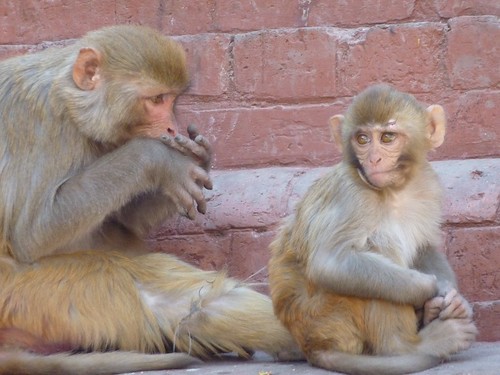 Awww… (another in the series of Pictures of Baby Animals Kathryn Can Not Have)
Awww… (another in the series of Pictures of Baby Animals Kathryn Can Not Have)
Of course there’s more to the area than just a few monkeys, but since I don’t know much about Buddhism, the religious significance of the site was mostly lost on me. In fact Patti commented - and I agree - that we really needed a “Buddhism for Dummies” cheat sheet of some kind in Nepal. Hence, you get photos of monkeys, and I reveal myself to be the shockingly ill-informed about one of the world’s major religions. (I actually thought that this Monkey Temple was one that I’d seen in an episode of “The Amazing Race”, but it turns out there is more than one Monkey Temple in the world. And now you know that my knowledge of Buddhism is not just shallow, it’s also at least partially based on “The Amazing Race”. I really need to stop writing about this now.)
After the Monkey Temple we went to see the area surrounding the Pashupatinath Temple. It’s a large complex of temples along the banks of the Pasupati river. We didn’t actually visit the complex itself, since only Hindus are allowed inside the temples, but we did take some time to view the Pasupati, which runs through Kathmandu. Like the Ganges it’s also considered a sacred river to Hindus, partly because it later flows into the Ganges. Also like the Ganges in Varanasi the Pasupati is a site where Hindu ritual cremation takes place.
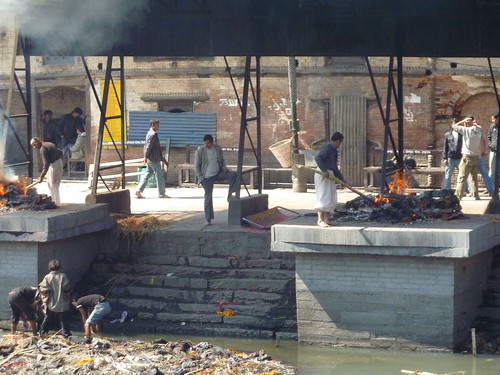 A couple of ghats, both in use. Also, garbage-pickers in the bottom left.
A couple of ghats, both in use. Also, garbage-pickers in the bottom left.
The river itself was miserable – it was nothing more than a grey trickle flowing sluggishly across a wide, muddy, garbage-strewn riverbed. You could see piles of ash and charred wood and… other things… that had simply been shoveled, still smoking, into the river. And there were people picking through those piles looking for anything of value that might have been left on the deceased’s body after the cremation. I understand that it’s a scared site and that cremation under these circumstances is traditional and holy, but it was such a grungy area that it was hard to feel like this would be a pleasant place to make your last exit.
After that charming interlude it was nice to head to another Buddhist site, this one was a stupa called Boudhanath. A stupa is a Buddhist religious monument, originally they were large mounds or dome shapes that often covered some sort of religious relic of the Buddha. Now stupas don’t always have a relic inside them. Generally they are simply large, solid domes that act as an object of veneration (And yes, you’re right. Since my embarrassing lack of knowledge about Buddhism was revealed in the paragraph above, I consulted Wikipedia about stupas. So sue me.) The Boudhanath is a particularly large stupa, with strings of prayer flags hung from its top. Like other Buddhist sites we saw it was pleasant and calming to walk around.
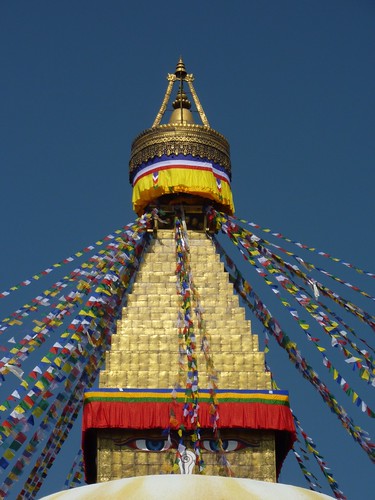 Boudhanath Stupa
Boudhanath Stupa
The stupa was also equipped with a lot of prayer wheels – cylinders on a spindles that are marked with prayers and are meant to be spun by hand while you walk past. In the Tibetan Buddhist tradition, it’s believed that spinning a prayer wheel has the same effect as reciting a prayer. At Boudhanath they also had an enormous prayer wheel inside an enclosure – it was about ten feet tall and about six feet in diameter. You grabbed onto a railing that encircled the whole thing and walked around in a circle, turning it as you walked.
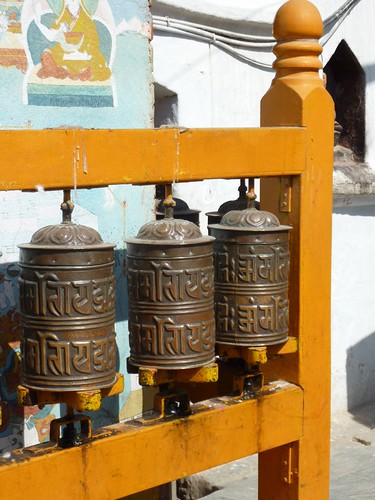
Normal-sized prayer wheels at Boudhanath
After finishing up at the stupa on Monday, there was time for more shopping (Patti certainly won the prize there, making the rest of us look like amateurs). And we had that nice meal I’ve already talked about – the one where everyone else wimped out on the yak cheese fondue. Even though it was the last day of our tour, Patti and I still had one more day in Kathmandu, and it turned out that Jonno, Sheila and Adam did too. So we made plans to spend the next day touring around a city called Bhaktapur, and even privately hired the same guide we’d had to show us around Kathmandu. Bhaktapur turned out to be a lovely place. So lovely, in fact, that it certainly deserves its own blog post.
I should get on that.

